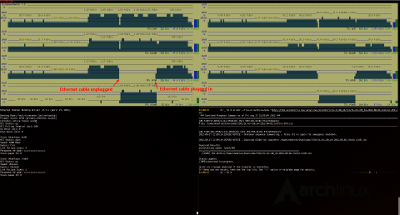Django Projects
Over the past 6 years, I've built a lot of things with Django. It has treated me very well, and I have very much enjoyed seeing it progress. I got into Django when I helped the company I was working for transition away from a homegrown PHP framework toward something more reliable and flexible. It was very exciting to learn more about Django at a time when the ecosystem was very young.
When I started with Django, there weren't a lot of pluggable apps to fill the void for things like blogs, event calendars, and other useful utilities for the kinds of sites I was building. That has changed quite a bit since then. The ecosystem has evolved and progressed like mad, and it's wonderful. We have so many choices for simple things to very complex things. It's amazing!
Unfortunately, during this whole time period, my development efforts have shifted from creating my own open source projects to share with the world toward more proprietary solutions for my employers. If it's not obvious to you from my blog activity in recent years, I've become very busy with family life and work. I have very little time to give my open source projects the attention they deserve.
For at least 4 years, I've been telling myself that I'd have/make time to revamp all of my projects. To make them usable with what Django is today instead of what it was when I built the projects. Yeah, this time has never showed up. Take a look at the last time I wrote a blog article!
I have decided to disown pretty much all of my open source Django projects. I've basically done this with one or two of the more popular projects already--let someone else take the reigns while I lurk in the background and occasionally comment on an issue here or there. I truly appreciate those who have taken the initiative here. But there are still plenty of projects that people may find useful that need some attention. I'm putting it up to the community to take these projects over if you find them useful so they can get the love and attention they need.
Here is a list of Django projects that anyone is free to assume responsibility for. Most of them are silly and mostly useless now. Some are unpleasant to look at and could use an entire rewrite.
- django-articles - Blogging engine, which I wrote for my own site many years ago. This one could probably use a full rewrite. [already maintained by John Leith].
- django-tracking - Visitor tracking to see what page a user is on and their general location based on IP. Update 2015-07-28: Adopted by bashu.
- django-axes - Track failed login attempts and ban users. This one is already pretty much owned by aclark4life
- django-reploc - Designed to show representative/retailer locations. I only used it on one site, but it was designed to be generic.
- django-smileys - To easily replace things like :) and B-) with emoticons or whatever. Pretty lame. Update 2015-07-28: Adopted by bashu.
- django-pendulum - A very basic time-tracking app. I believe this has already been forked and used for some more interesting commercial projects.
- django-bibliophile - A way to let your visitors know what you're reading.
- django-watermark - Some utilities to add watermarks to images. Update 2015-07-28: Adopted by bashu.
- Any other Django-related project you see at https://github.com/codekoala?tab=repositories or https://bitbucket.org/codekoala/
The fact that I'm giving up these projects does not mean I'm giving up on Django. On the contrary, I'm still using it quite heavily. I'm just doing it in such a way that I can't necessarily post my work for everyone to use. I honestly don't expect much of this disowning effort, since the projects are mostly stale and incompatible with recent versions of Django. But please let me know if you do want to take over one of my projects and care for it.



